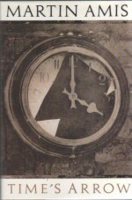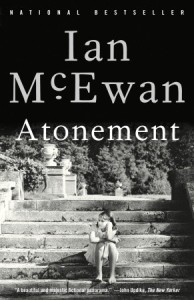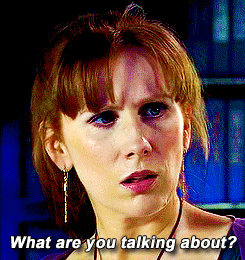Rhetoric may consider any sort of communication as a legitimate area of study: novels and short stories of every genre, communications that encompass speech, professional discourses, digital media, and even the debates that surround the study of rhetoric (what is rhetorical? How do we know? What definitions guide us?). Literary texts are one way of analyzing how rhetoric is applied, by narrowing the field of possible artifacts of study and by the choice of the theorist to work with these mediums. Naturally, analyzing how and why texts move us rhetorically – through a consideration of their “affective, ethical, and aesthetic” qualities – invites the question of what texts in particular are the focus of rhetorical study, and why (Phelan “Teaching” 219).
James Phelan provides an example using Martin Amis’s Time’s Arrow, first defining narrative as “somebody telling somebody else on some occasion and for some purpose or purposes that something has happened” (“Teaching” 219). This definition is one that he uses to “direct our attention to tellers, audiences, and purposes as much as to the ‘something that happened’” (ibid). Working through his analysis, it’s clear he choose Time’s Arrow because it offers attributes that supports his argument that “our experience of literature is multilayered — typically involving at the very least our cognitive abilities, our ethical values, and our emotions…[and that] readers are capable of having similar experiences of the same text” (218). This novel, which is told using backward narration, from the death of the protagonist to his birth, explores the narrator’s attempts to consider the moral being of the protagonist, Odilo Unverdorben, who worked as a doctor in Auschwitz during World War II. It’s context alone invites ethical response, which may be a huge factor when selecting a narrative text for study.
Phelan has a large body of scholarship in rhetorically analyzing narrative texts, especially identifying affective texts that can be studied for their rhetorical properties. His book, Experiencing Fiction: Judgments, Progressions, and the Rhetorical Theory of Narrative, analyzes “ten fictions that collectively constitute a very broad range of interpretive challenges and an equally broad sample of the ways in which narratives deploy judgments and progressions to affect (and,indeed, to effect) our experience of them” (xi-xii). These ten fictions are Ambrose Bierce’s “The Crimson Candle,” Jane Austen’s Persuasion, Toni Morrison’s Beloved, Edith Wharton’s “Roman Fever,” Ian McEwan’s Atonement, Ernest Hemingway’s “A Clean, Well-Lighted Place,” Sandra Cisneros’s “Woman Hollering Creek,” Alice Munro’s “Prue” Ann Beattie’s “Janus,” and Robert Frost’s “Home Burial” (xii). One immediately notices that all of these texts are by well-known, established authors and many of these are fairly well-known stories that enjoy popular digestion. Judgments and progressions refer first to how we ethically value the characters (judge them) and how the narrative “influences significantly our hopes and desires;” that is, what we hope will happen and our willingness to follow the progression, or “paying attention to movement of a narrative from beginning to middle through ending,” in order to find out what happens (Experiencing xii, 2). These judgments extend to the author and narrator, and become more sophisticated as we become more advanced readers, so that “good guys” and “bad guys” are no longer sufficient as narrative devices, but our ethical judgments of more ambiguously moral characters remains. It would seem up to the teacher and scholar to be broadly familiar with a diverse field of narrative fiction in order to select texts that have these elements, or have some part of these elements, in order to successfully apply rhetorical narrative theory. And why would we select this critical approach when teaching or studying rhetoric or literature? Phelan argues that
[A]ttending to the various layers of our experience (especially the intellectual, the emotive, the ethical, and the aesthetic) and recognizing the sources of those experiences in authorial strategy and textual phenomena allow us to understand and value the power of fictional narrative. The reading practice and the associated critical approach ultimately want to give a plausible account of fictional narrative’s ability to reinforce, extend, challenge, or sometimes change what we know, think, believe, and value—and to that extent, its ability to reinforce, challenge, or even change who we are. (Experiencing xiii)
In addition to texts listed above, the following texts appear in many other analyses applying rhetorical and affective literary theory: “Desiree’s Baby,” “The Tell-Tale Heart,” “Roman Fever,” Persuasion, and Beloved. In particular, scholars consider the author-audience communication, the norms of the implied author (IA), and, in some cases, the historical, contextual, and biographical means of these texts’ production. Thematically, the narratives analyzed cross genres, represent a diverse body of authors, and address different topics, regions, cultures, and more. The decision-making process behind their selection as objects of study are also diverse. Consider the novel Atonement, considered by some to be one of the ten “devastatingly” saddest novels: James Phelan includes this novel because it “makes judgment itself a major thematic issue, while employing a tour de force progression the effect of which depends heavily on a disclosure that is delayed until almost the ending” (10). He also considers it to employ mimetic and synthetic narrative components that make its analysis a broad survey of narrative forms (13).
There is seemingly an endless amount of narrative texts that could be analyzed for their rhetorical and affective impact on readers, and, in fact, this particular bounty also creates a sense of incoherence to the field of literary study as well as an abstraction for rhetorical study. What gets included? How do you choose one text over another? As rhetoric, composition, and literature meet in the first year composition classroom, the coherency of each field and what many have argued is a lack of definition and scope, its legitimacy and power within the academy, and the questions of what gets taught and how we assess learning remain prominent and ever-critical for the rhetorical narrative scholar. This reminds us of the criticism that the classroom reveals the instructors’ biases, and certainly text selection is part of that bias. Ultimately we choose, as instructors, texts that move us and that we believe exemplify the characteristics of a narrative that are most worth study. Our choice(s) of theory also play a part, as when I believe reading Amy Bloom’s “Silver Water,” or Ray Bradbury’s “All Summer in a Day,” or David Foster Wallace’s “Incarnations of Burned Children,” will move my students as they moved me[1] and that their reading can lead to concrete rhetorical and affective structural study.
As an argument against the sterile analysis of narrative texts that seek to disregard the lay reader experience while privileging the academic scholar’s interpretation, studying narrative for its affective and rhetorical effect seems to poised to become a more widely recognized literary theory (as it spreads through other disciplines and intersects with many), it is also not touted as the “One True Path to pedagogical salvation for literary critics… [but] the approach has much to recommend it” (Phelan “Teaching” 226). Considering affect is a thing, becoming a major critical theory in many fields today [2]. Affect and the narrative text are analyzed through a close analysis of the implied author, the real author, and the author-audience communication, and is closely related to theoretical origins of studying narrative as rhetoric, the rhetoric of fiction, and shared reader experiences of certain texts.
Reader, what book affected you the most deeply? I’m interested in the fictional literary experiences of others, so please, leave your selection in the comments!
***************************
[1] Offered without deep textual analysis of their affective qualities, as I’ve made no formal study of these texts, though each has a poignant narrative to offer that suggests to me isolation, removal, otherness and they always resonant emotionally with my students.
[2] “Doctor: We Should Worry About the Flu, Not Ebola” a story based on public fear and how doctors deal with the emotional fears of patients and emotional epidemiology. The story interviewed Dr. Danielle Ofri, author of What Doctors Feel: How Emotions Affect the Practice of Medicine (Beacon 2013).
***************************
Works Cited or Consulted:
Keen, Suzanne. “Introduction: Narrative and the Emotions.” Poetics Today 32.1 (Spring
2011): 1-53. Print
Phelan, James. Experiencing Fiction: Judgments, Progressions, and the Rhetorical
Theory of Narrative. Columbus: Ohio State University Press, 2007. Print.
—-“Teaching Narrative as Rhetoric: The Example of Time’s Arrow.” Pedagogy: Critical Approaches to Teaching Literature, Language, Composition, and Culture 10.1 (2009): 217-28.
Shen, Dan. “Implied Author, Authorial Audience, and Context: Form and History in Neo-
Aristotelian Rhetorical Theory. NARRATIVE 21.2 (May 2013): 140-58. Print.
— “Neo-Aristotelian Rhetorical Narrative Study: Need for Integrating Style, Context, and Intertext. Style 45.4 (Winter 2011): 576-597. Print.
Sprinker, Michael. “ What is Living and What is Dead in Chicago Criticism.” Boundary
2 13.2-3 (Winter/Spring 1985): 189-212. Print.
Stefanescu, Maria. “Revisiting the Implied Author Yet Again: Why (Still) Bother?” Style
54.1 (Spring 2011): 48-66. Print.
Taylor, Richard C. “Literature and Literary Criticism.” English Studies: An Introduction
to the Discipline(s). Ed. Bruce McComisky. Urbana: National Council of Teachers of English, 2006. 199-222. Print.




Wow -this was absolutely fascinating and I am so attracted to Phelan’s scholarship and theories of affective readings of texts. I totally agree that the traditional, formalist deep/close reading of a text tends to “disregard the lay reader experience while privileging the academic scholar’s interpretation, studying narrative for its affective and rhetorical effect seems to poised to become a more widely recognized literary theory.” I was at a workshop today where close reading was discussed, but it was in middle of the example that I realized that THIS was what I rebelled against in college, when we focused on only the words, what the author “meant” as if there were only one response that none of us knew and it was a game to guess what the professor wanted. We were not the scholar, thus “our” reading was typically wrong. With affective rhetoric, experience, background, cultural influences — they all inspire differences in interpretation. I can’t wait to read from your reference list…excellent!
My students struggle with this as well, which suggests it is a tried-and-true teaching approach that just leaves the student reader at sea, not trusting their own opinions or responses. They often ask me, “What does the author mean?” or “what am I supposed to think?” about a story or text. I always say “feeling is first,” and then, once we ground ourselves in our own response, we can compare and consider other responses, including theoretical readings.
Hi Julie! Wonderful post and focus on narrative texts as rhetorical objects of study. I was really excited when I read this post, because after reading over the Common Core Standards this past week, I became fairly alarmed about the implications of the CCS on the use of narrative texts in the primary levels, particularly in grades 9-12; your paper, however, gives me hope that there is in fact an academic, scholarly approach that can be legitimized and used on narrative texts in the primary levels, so maybe the schools won’t throw out the best literature out there! Additionally, the CCS states that one of the key shifts in English Language Arts is a move away from students writing about their own experience, or using their own experience as evidence to support their beliefs. If we begin to teach students how story can be constructed and thought of in a rhetorical sense, we can begin to help them build their own stories, and make their stories rhetorically and overall, impressive.
And you asked the mother of all questions at the end of this paper…how in the world could I begin to name the texts that have affected me the most? Here goes nothing:
1) Ceremony, Leslie Marmon Silko
2) Lolita, Vladimir Nabokov
3) SozaBoy, Ken Saro-Wiwa
4) Their Eyes Were Watching God, Zora Neale Hurston
5) Wolfsong, Louis Owens
6) Almanac of the Dead, Leslie Marmon Silko
Every one of the texts above absolutely riveted me, in the way that each in turn were devastatingly tragic, horrifying, disturbing, and beautiful. Each one of the texts above uses language and structure in such a precise, exacting, and stunning manner that I’m simply left in awe by each author.
Great reading list, Meredith. I also would add Silko’s Almanac of the Dead for its ability to make me feel I was in another world, seeing the world through Native eyes and understanding the psychoses of their experience throughout time. It’s mystical qualities also felt authentic to the spiritual beliefs of Native people. The only other texts I would add as deeply affective, were Tolstoy’s War and Peace, and Hugo’s Les Miserables, especially the latter as dealing with the very real experience of poverty and salvation. They both offer the reader the ability to live through another’s eyes, or to relate quite closely to the experience of war, extreme poverty, and true suffering. I’m reading Atonement right now, so that may go on the list as well. Well, I would also have to add Cormac McCarthy’s The Road and, if I’m going way back to the book that stayed with me the most since childhood, I have to add A Tree Grows in Brooklyn by Betty Smith.